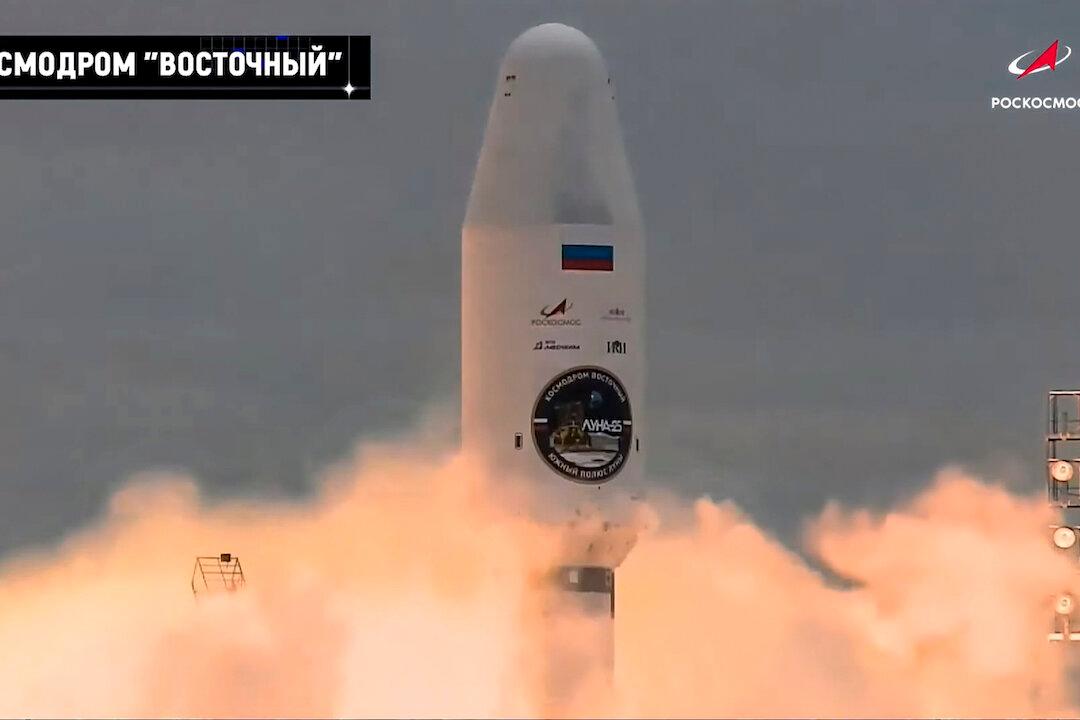Russia has successfully launched its first moon-landing spacecraft in 47 years in a race to find water on the moon.
A Soyuz 2.1v rocket carrying the Luna-25 craft launched from the Vostochny cosmodrome in Russia’s Far East, some 3,450 miles (5,550 kilometers) east of Moscow, on Friday at 2:11 a.m. Moscow time. A video feed from Russia’s space agency, Roscosmos, showed the Luna-25 craft having launched successfully.




